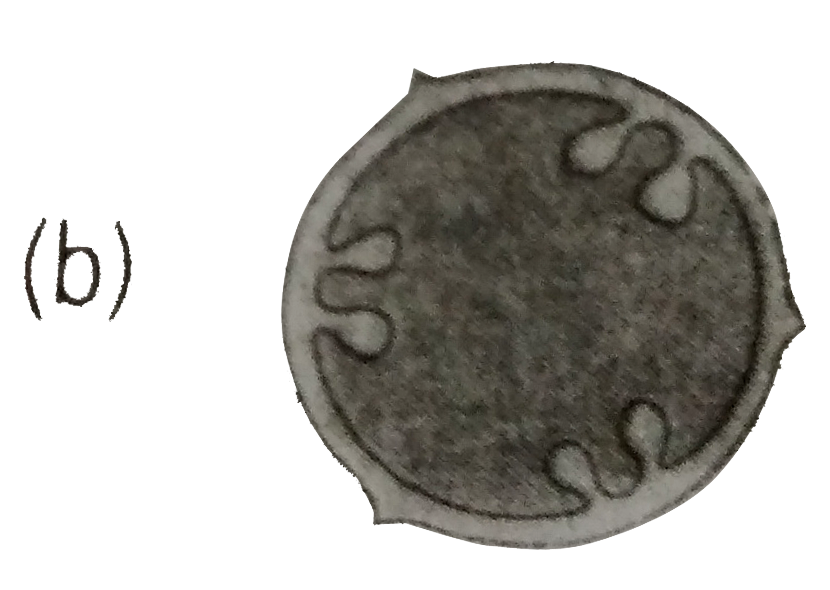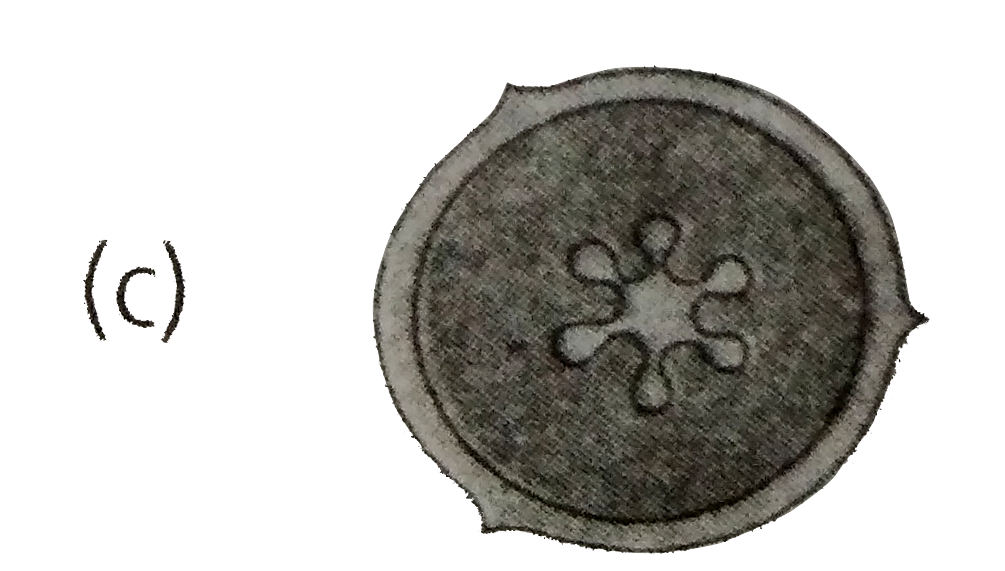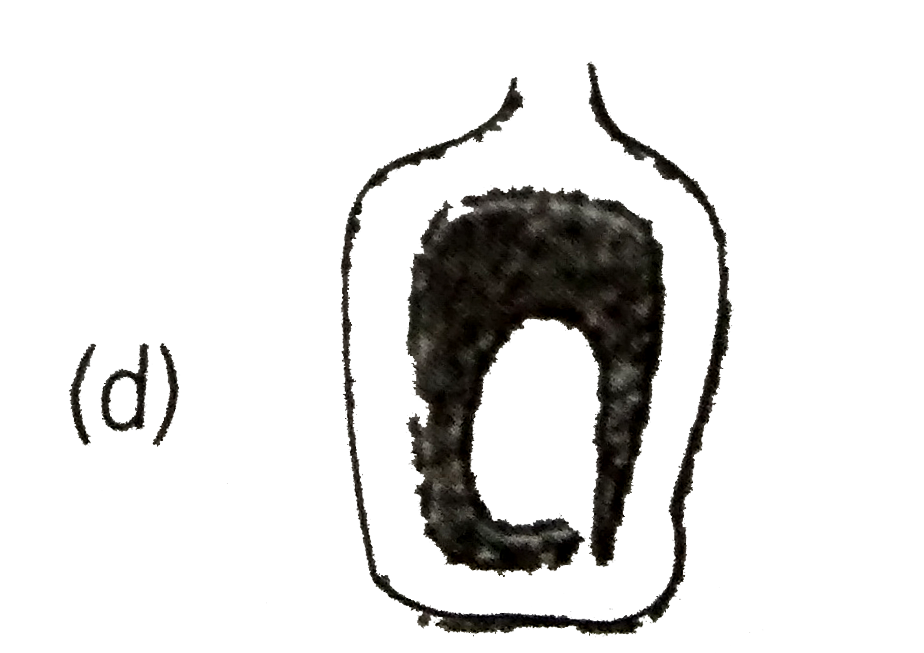Which of these properties are seen in Hibiscus rosa - sinensis ?
(i) Leaves with alternate phyllotaxy
(ii) Polycarpellary syncarpous inferior ovary
(iii) Twisted aestivation in petals
(iv) Basal placentation of ovules
i and ii
iii and iv
i and iii
ii and iv
The correct Answer is:C
To determine the properties of Hibiscus rosa-sinensis, we will evaluate each statement provided in the question:
1. Leaves with alternate phyllotaxy:
- In Hibiscus rosa-sinensis, the leaves are indeed arranged in an alternate pattern along the stem. This means that each leaf arises at a different height from the previous one, rather than being directly opposite. Therefore, this statement is correct.
2. Polycarpellary syncarpous inferior ovary:
- The ovary of Hibiscus rosa-sinensis is actually a superior ovary, not inferior. A superior ovary is one that is situated above the attachment of other floral parts. Thus, this statement is incorrect.
3. Twisted aestivation in petals:
- The petals of Hibiscus rosa-sinensis exhibit twisted aestivation, where the petals overlap each other in a specific manner. This is characteristic of the flower's structure. Therefore, this statement is correct.
4. Basal placentation of ovules:
- In Hibiscus rosa-sinensis, the ovules are not attached at the base of the ovary (which would indicate basal placentation). Instead, the placentation is axile, meaning the ovules are attached along the central axis of the ovary. Thus, this statement is incorrect.
Summary of the evaluation:
- Statement (i) is correct.
- Statement (ii) is incorrect.
- Statement (iii) is correct.
- Statement (iv) is incorrect.
Therefore, the properties seen in Hibiscus rosa-sinensis are statements (i) and (iii).
- In Hibiscus rosa-sinensis, the leaves are indeed arranged in an alternate pattern along the stem. This means that each leaf arises at a different height from the previous one, rather than being directly opposite. Therefore, this statement is correct.
- The ovary of Hibiscus rosa-sinensis is actually a superior ovary, not inferior. A superior ovary is one that is situated above the attachment of other floral parts. Thus, this statement is incorrect.
- The petals of Hibiscus rosa-sinensis exhibit twisted aestivation, where the petals overlap each other in a specific manner. This is characteristic of the flower's structure. Therefore, this statement is correct.
- In Hibiscus rosa-sinensis, the ovules are not attached at the base of the ovary (which would indicate basal placentation). Instead, the placentation is axile, meaning the ovules are attached along the central axis of the ovary. Thus, this statement is incorrect.
- Statement (i) is correct.
- Statement (ii) is incorrect.
- Statement (iii) is correct.
- Statement (iv) is incorrect.
Topper's Solved these Questions
Similar Questions
Which of the following materials did people use in ancient times for making clothes
(i) Leaves of trees
(ii) Newspaper
(iii) Metal foils
(iv) Animal skins and furs
View SolutionWrite floral formula for a flower which is bisexual, actinomorphic sepals five, twisted aestivation, petals five valvate aestivation, stamens six, ovary tricarpellary, syncarpous , superior, trilocular with axile placentation.
View Solution
Knowledge Check
Which of the following figures represents a typical placentation as seen in Hibiscus rosa sinensis (China rose)?
A B
B C
C D
D
Select the characters which are not applicable to the family solanaceae
(i) Empipetalous and syngenesious anthers
(ii) Bicarpellary and syncarpous ovary
(iii) Oblique ovary with axile placentation
(iv) Stamens six, arranged in two whorls
(V) Bicarpellary, syncarpous and inferior ovaryA(ii) and (iii) onlyB(i), (iv) and (v) onlyC(ii), (iv) and (v) onlyD(i) and (iii) onlyIn which of the properties listed below, hydrogen does not show similarity with halogens?
(i) nature of the oxide
(ii) Electropositive character
(iii) Combination with alkali metals
(iv) AtomicityA(i) and (ii)B(iii) and (iv)C(ii) onlyD(i) and (iii)
In which of the properties listed below, hydrogen does not show similarity with halogens?
(i) Nature of the oxide
(ii) Electropositive character
(iii) Combination with alkali metals
(iv) Atomicity
View SolutionWhich of these properties are seen in both facilitated diffusion as well as active transport ?
I. Requires ATP for energy .
II. Highly selective process .
III. Occurs against the concentration gradient.
IV. There occurs transport saturation .
View SolutionWhich of the following plants possess isobilatera leaves?
(i) Wheat
(ii) Banana
(iii) Garden pea
(iv) Groundnut
View SolutionWhich of the following features are the characteristics of hydrophilous flowers?
(i) Brightly coloured petals
(ii) Pollen grains with long ribbon-like structures
(iii) Production of nectar
(iv) Production of large number of pollen grains
View SolutionWhich of the following statements is/are correct ?
(i) Endothecium lies below epidermis
(ii) Fusion of egg with male gamete is called apogamy
(iii) Synergids are haploid.
(iv) The point at which funicle touches the ovule is raphe.
View Solution
